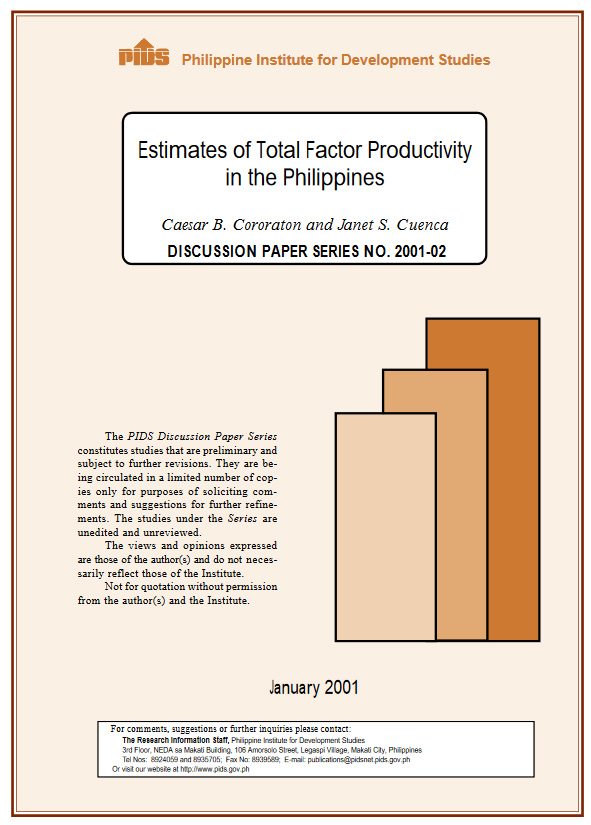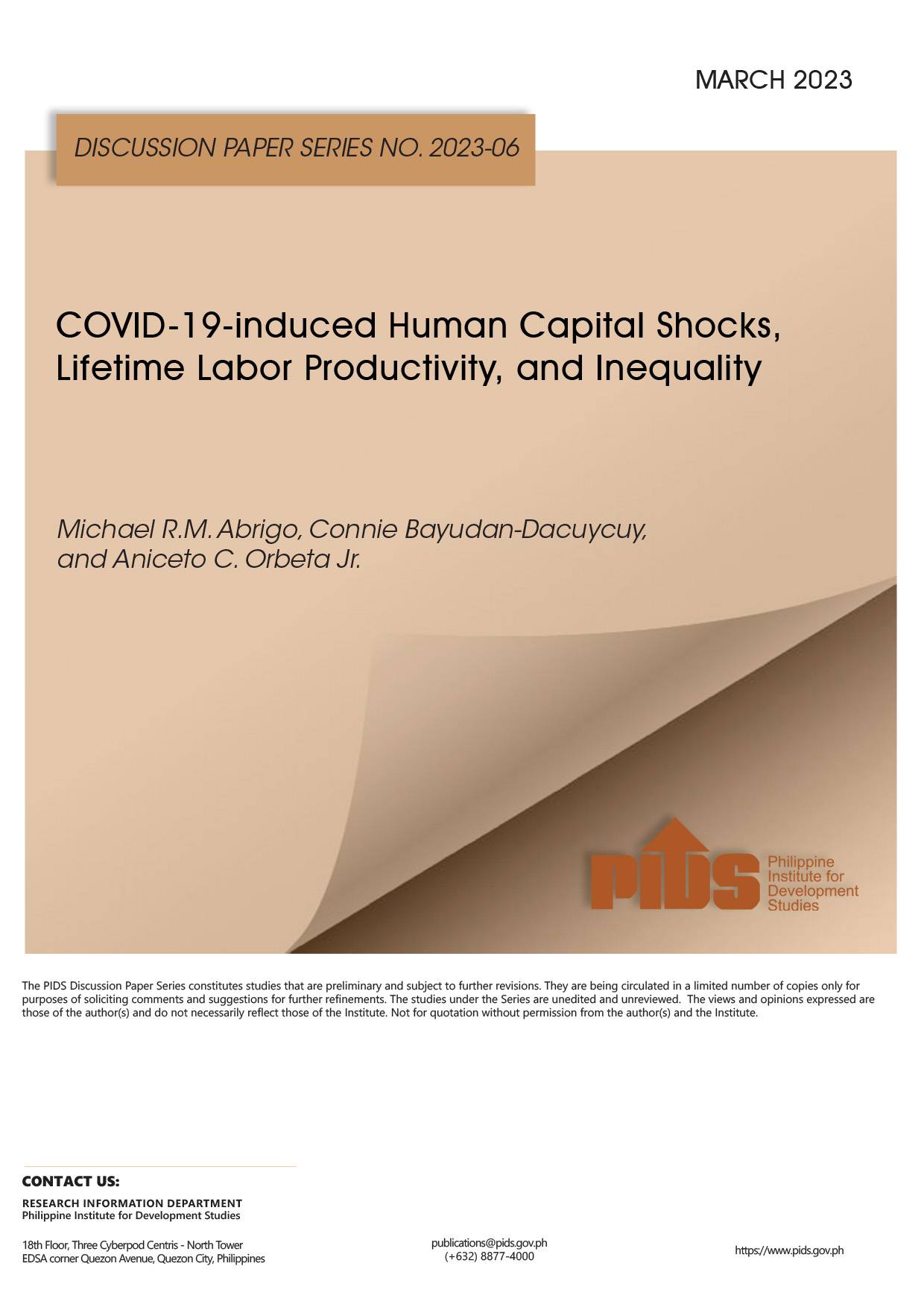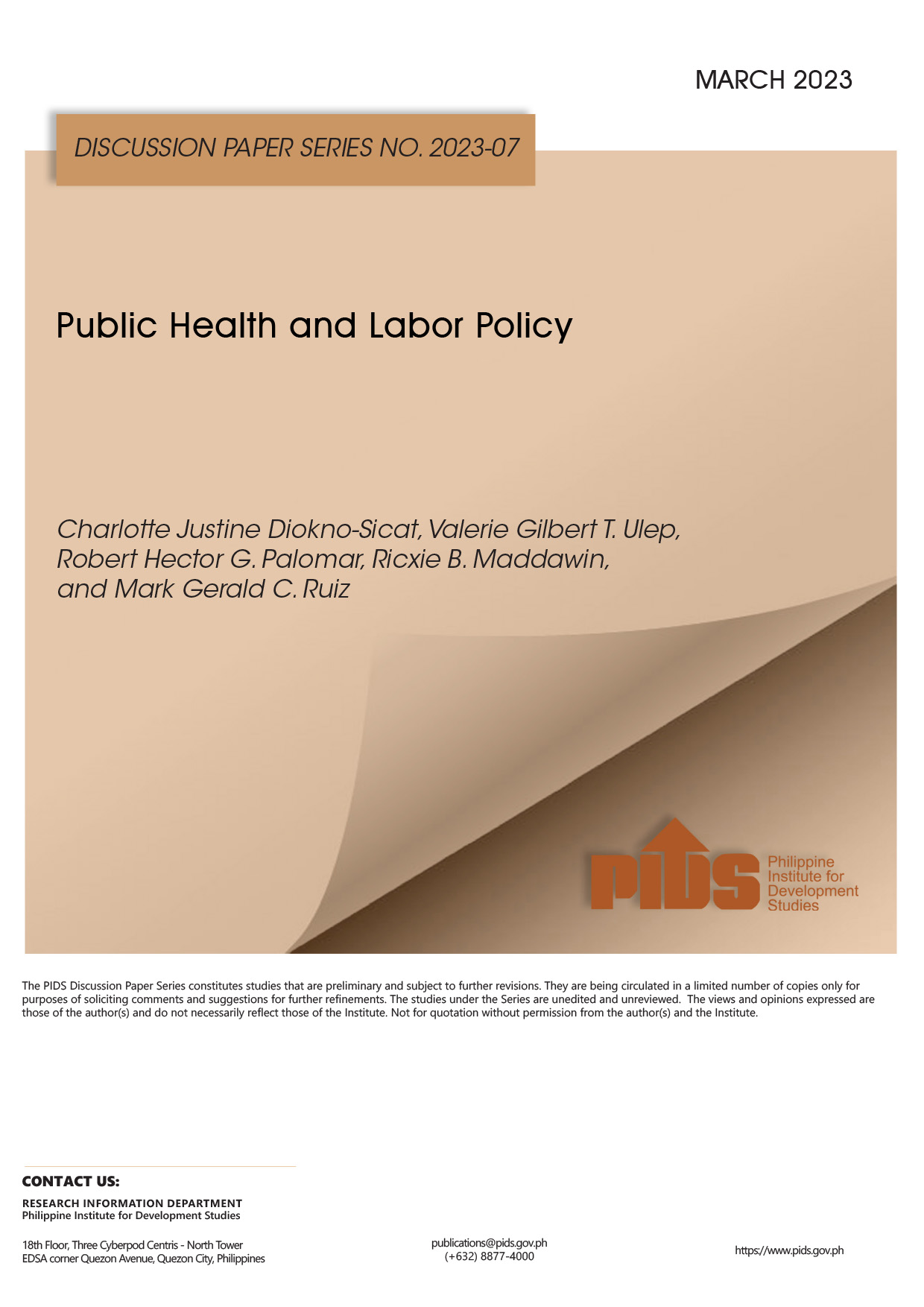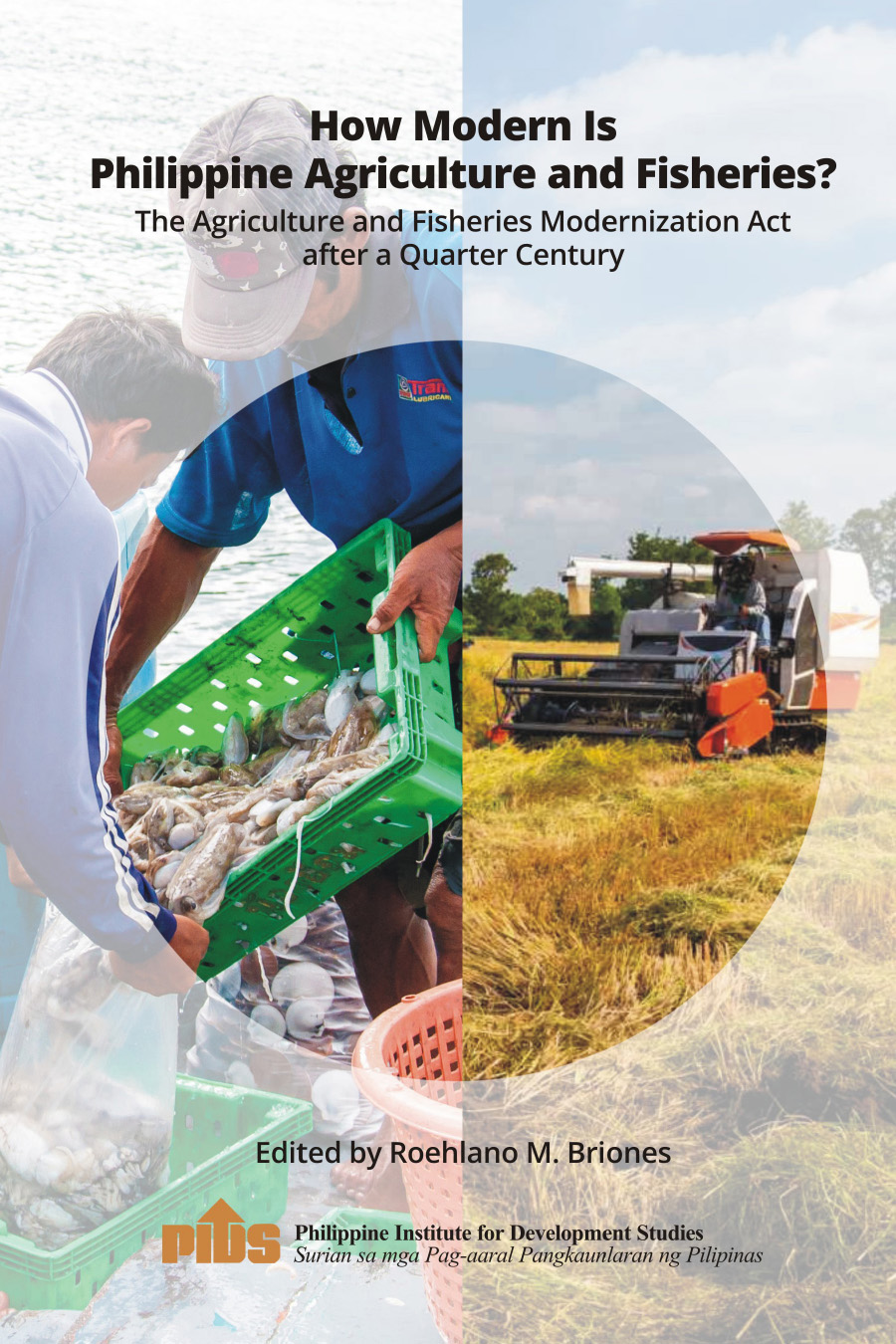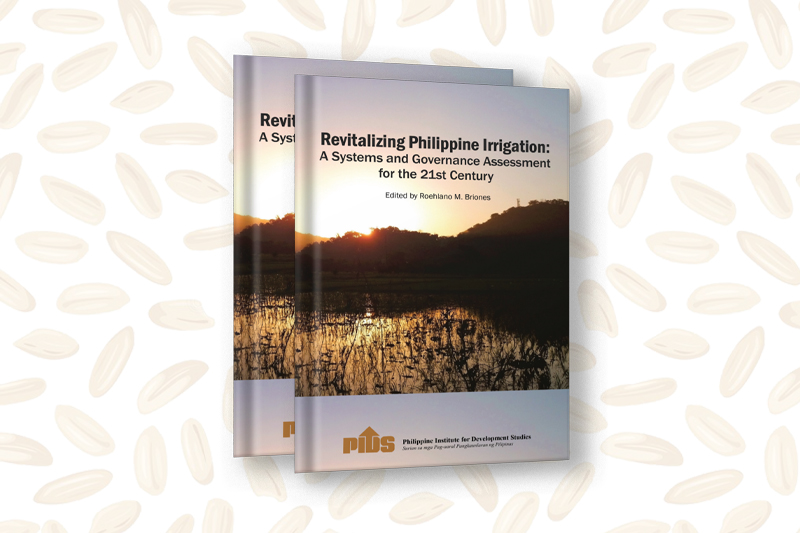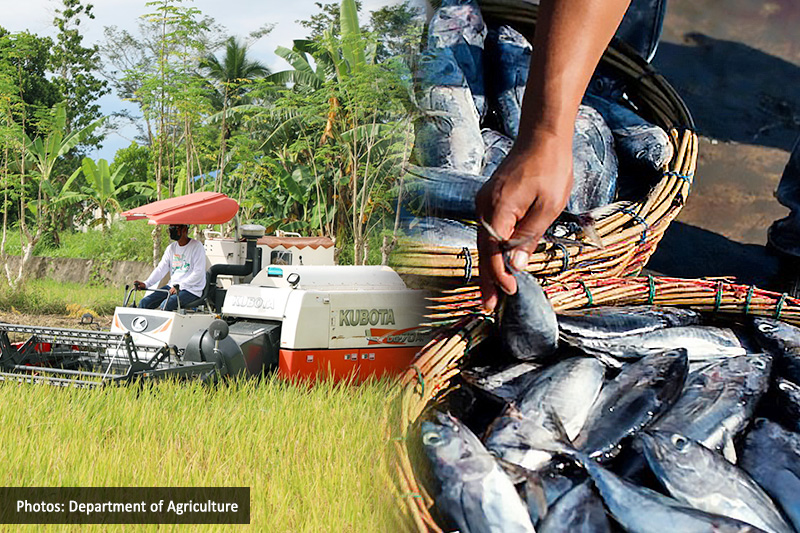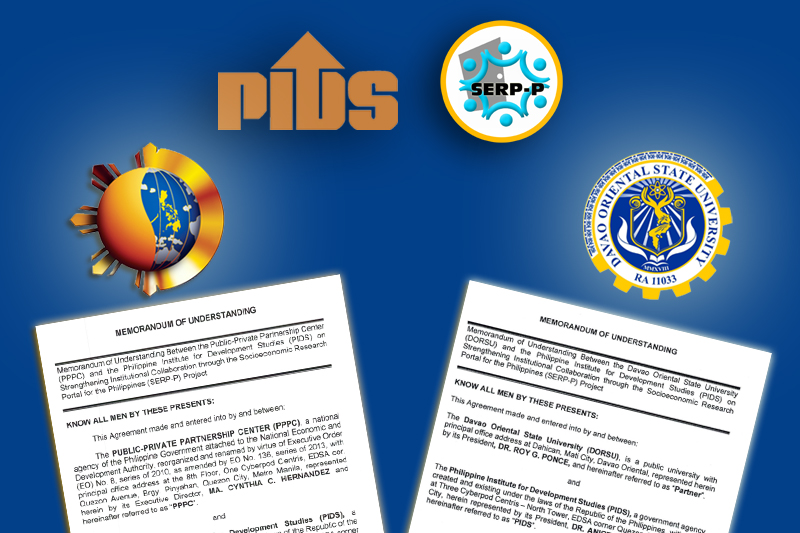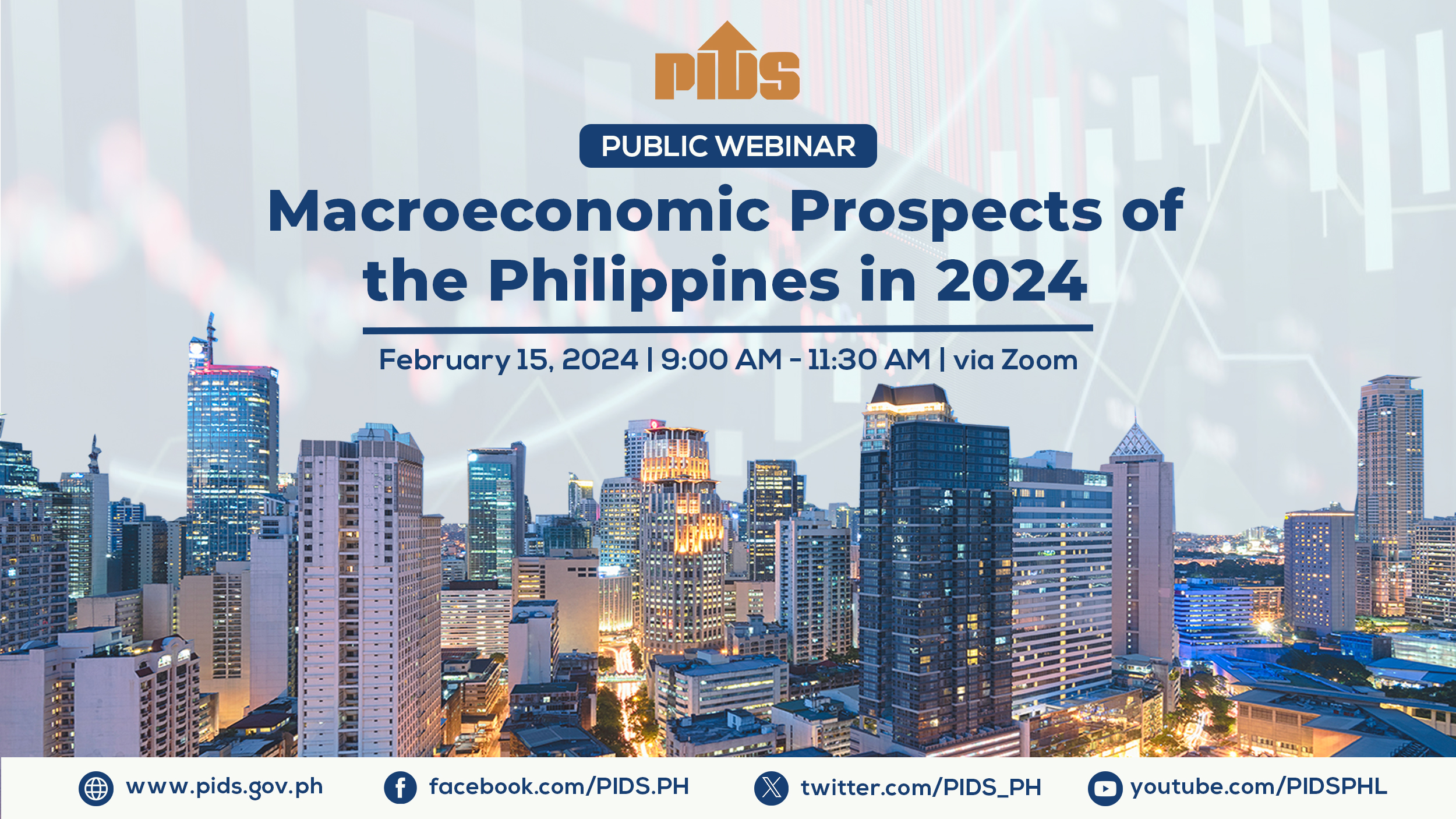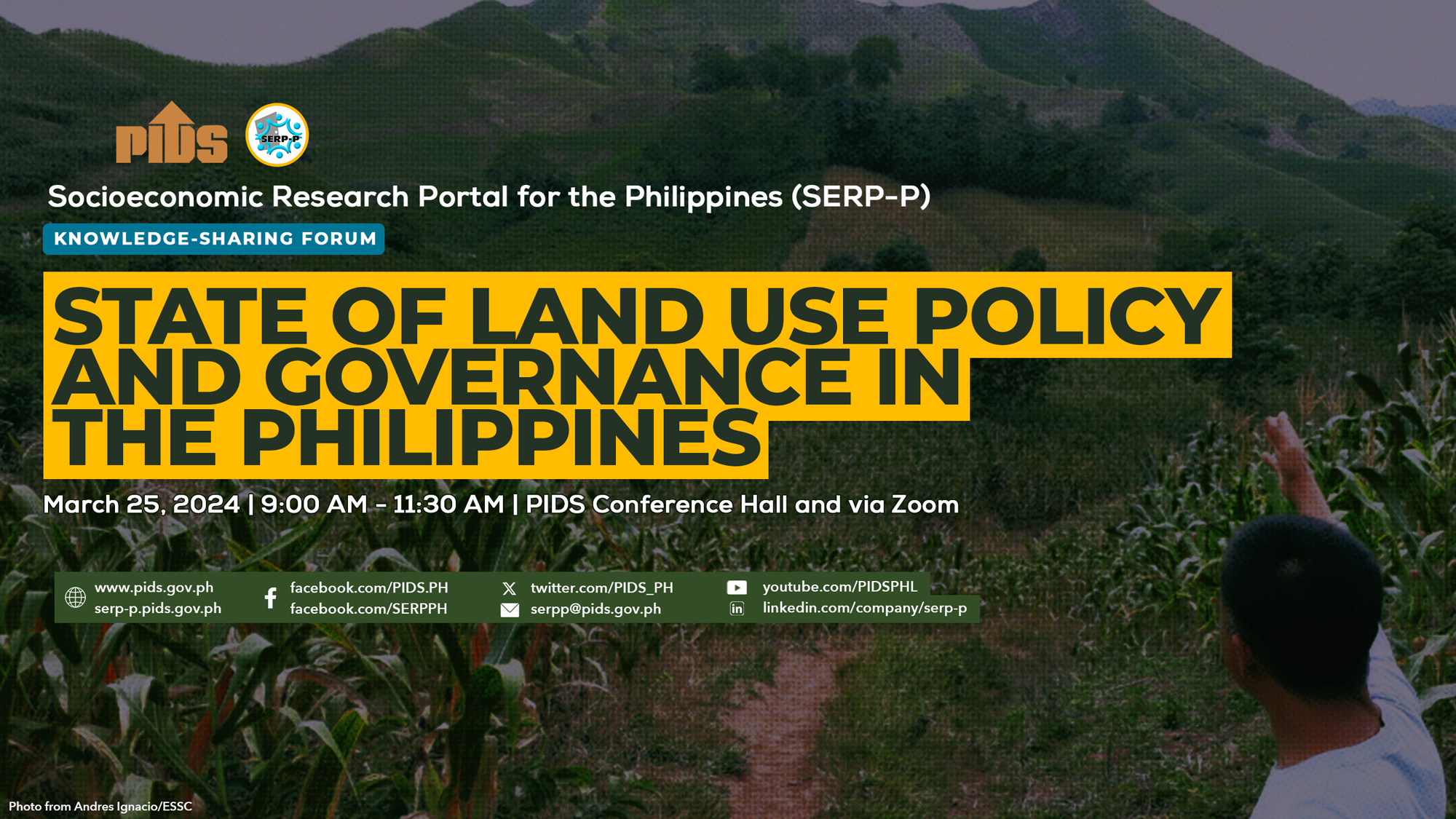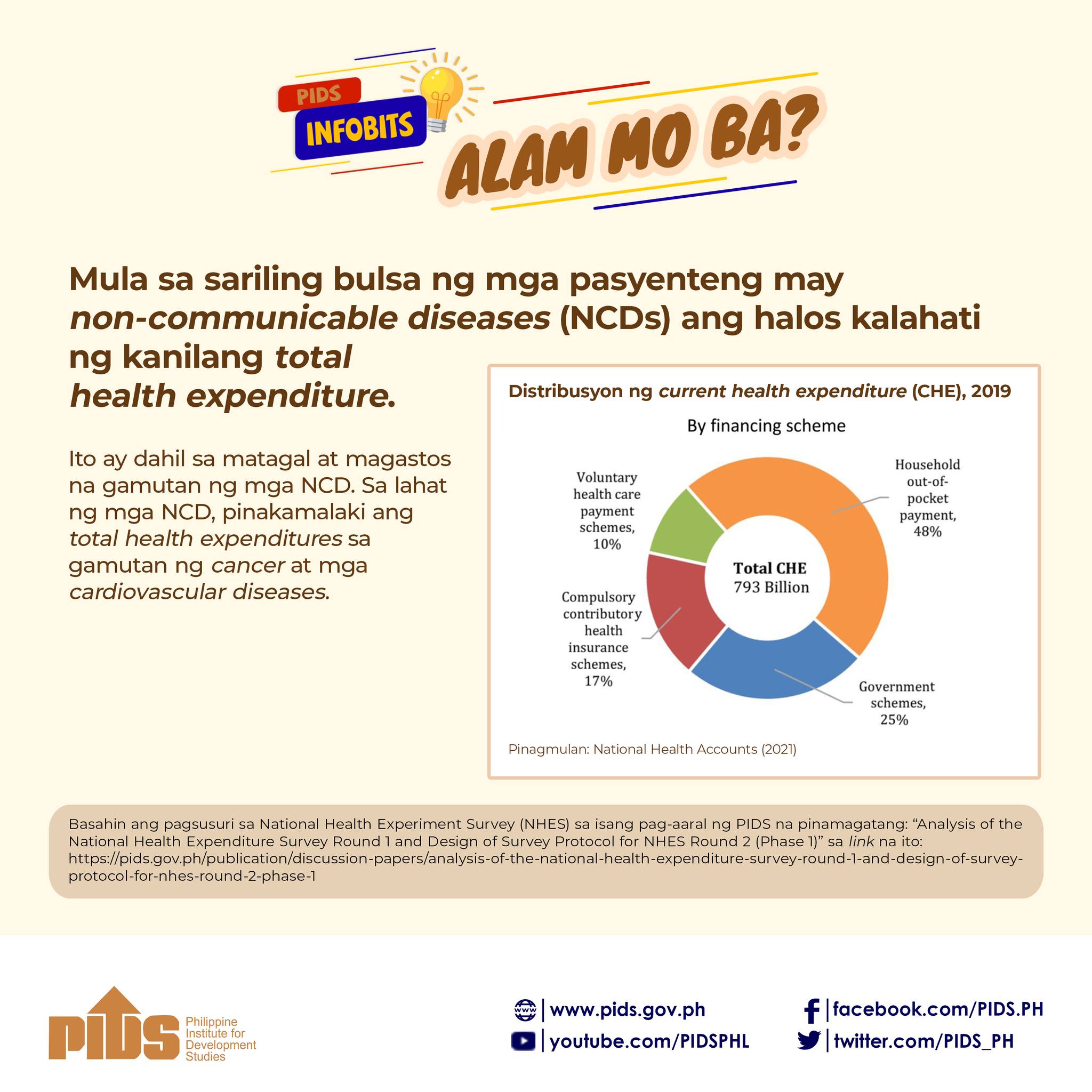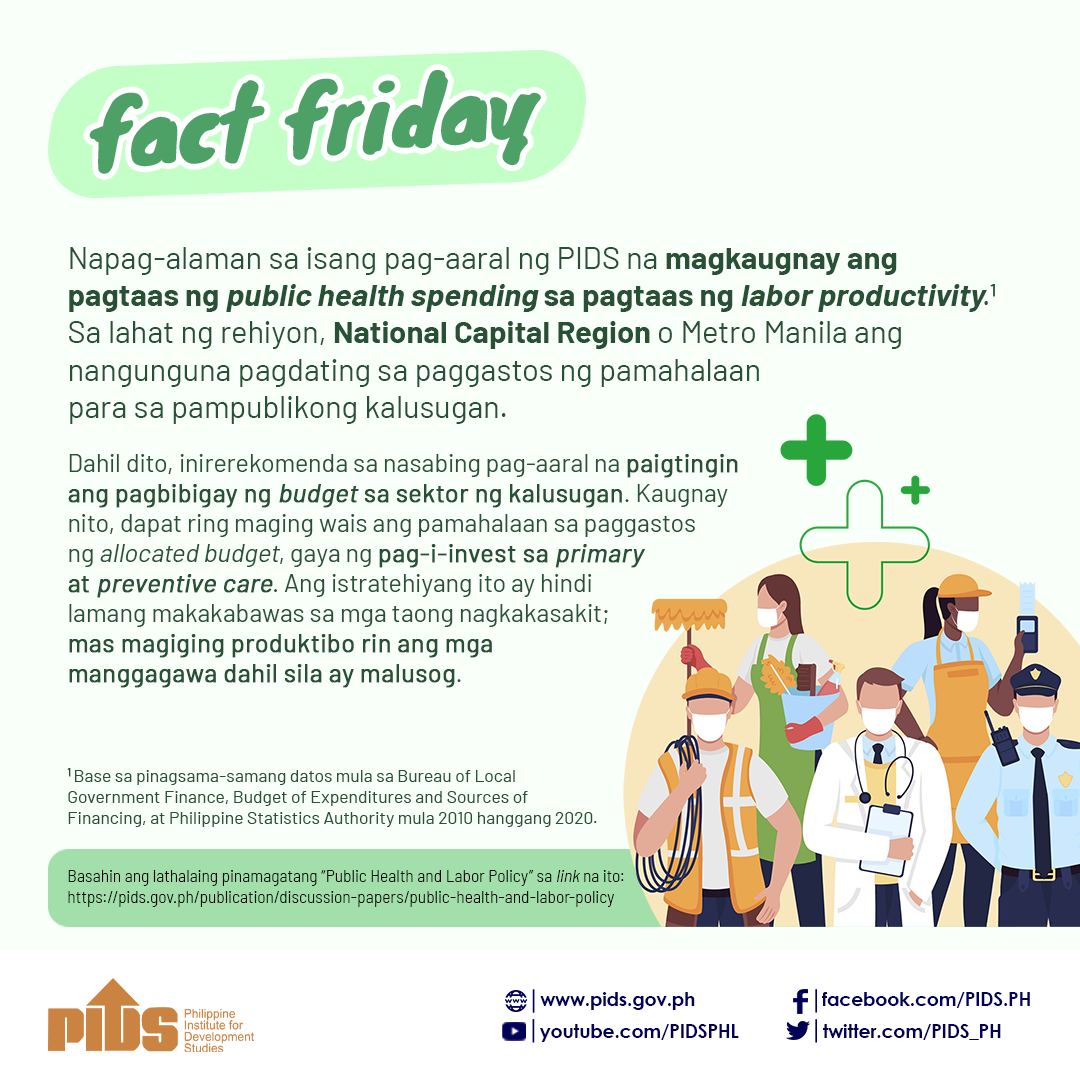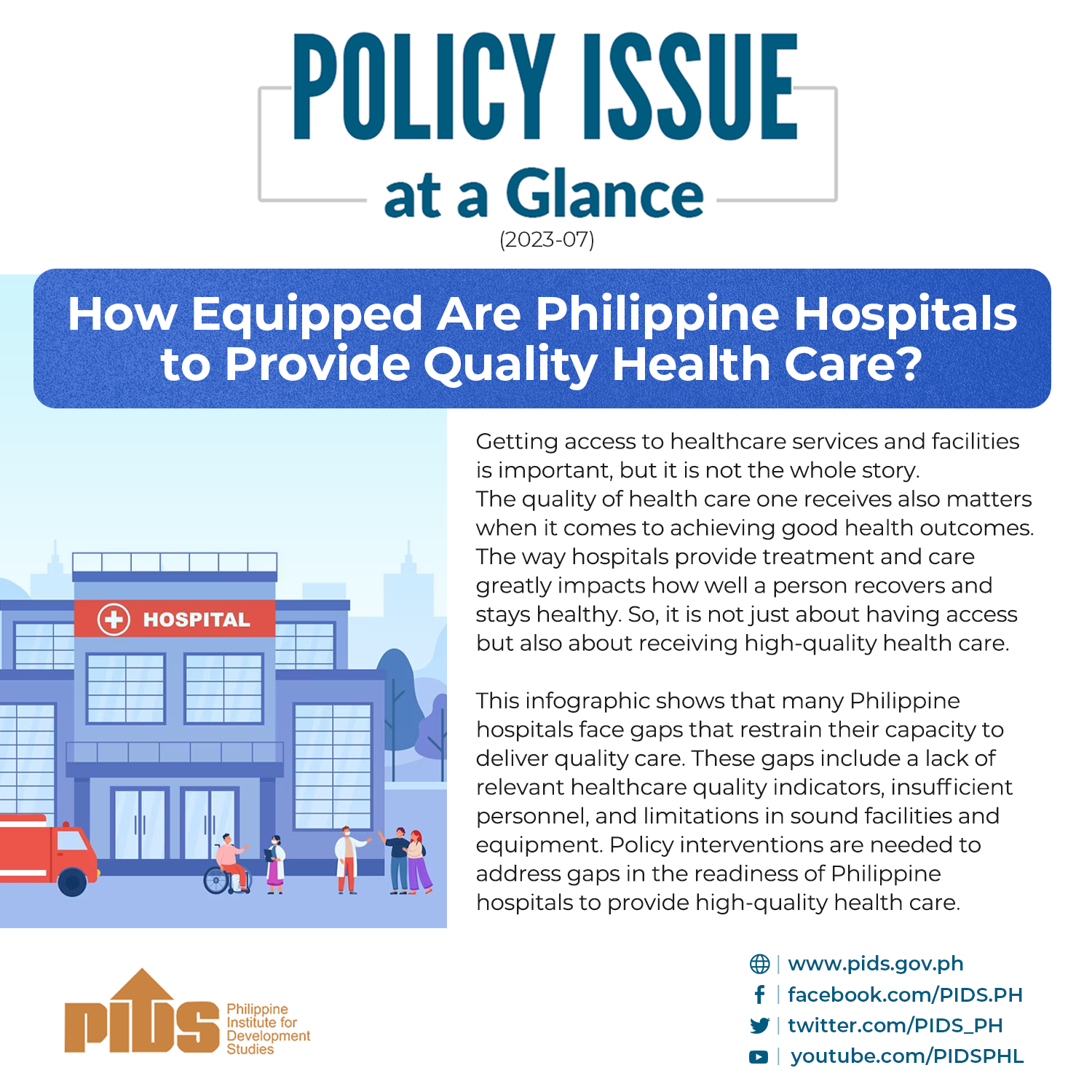The paper presents an updated TFP estimates in the Philippines. The present estimates were derived using a modified set of methodologies, thus may not be comparable with those derived in the previous estimates (Cororaton and Caparas 1999). Modifications were introduced in the method for computing sectoral employment, sectoral investment and sectoral capital stock. Based on the revised TFP estimates, one can observe favorable as well as unfavorable trends. Sectoral estimates showed improving TFP in the 1990s, although a number of the sectoral TFP levels are still negative. However, for the economy as a whole, 1990 saw a slight decline in TFP. This could indicate that there may seem to be some unfavorable resource allocation effects. Looking at the factor intensity results, the growth during the period could generally be described as capital accumulation type of growth. This is particularly true for nontradable sectors, specially the service-related sectors. The labor-capital ratios and the sources of growth analysis indicate a movement of capital towards these sectors, relative to the rest of the sectors. One factor which may have contributed to this type of resource movement is the prolonged real appreciation of the currency in face of an aggressive trade reform programs in the first half of the 1990s. This kind of an economic environment may not be conducive to production activities, both for domestic consumption and exports. In a period when capital inflow is massive, which actually transpired during the first half of the 1990s, nontradable, service sectors could become an attractive destination of capital.
Citations
This publication has been cited 12 times
- Boroviæ, Zoran, Mladen Rebiæ and Dalibor Tomaš. 2020. Total factor productivity drivers in the selected EU countries: approach. Zbornik radova Ekonomskog fakulteta u Rijeci/Proceedings of Rijeka Faculty of Economics, 38, no. 1, 295-315. University of Rijeka, Faculty of Economics and Business.
- Calub, Renz Adrian. 2011. Linking financial development and total factor productivity of the Philippines. MPRA Paper 66042. University Library of Munich, Germany.
- Cororaton, Caesar B.. 2002. Total factor productivity in the Philippines. Discussion Papers DP 2002-01. Philippine Institute for Development Studies.
- Cororaton, Caesar B.. 2002. Research and development and technology in the Philippines. Discussion Papers DP 2002-23. Philippine Institute for Development Studies.
- Cororaton, Caesar B.. 2003. Technological innovations in Japan and S&T experiences in the Philippines: Drawing policy lessons for the Philippines. Research Paper Series RPS 2002-04. Philippine Institute for Development Studies.
- Liao, Christine Marie and Gloria O. Pasadilla. 2007. Has liberalization strengthened the link between services and manufacturing?. Discussion Papers DP 2007-13. Philippine Institute for Development Studies.
- Paderanga, Cayetano W. Jr.. 2007. Infrastructure in Philippine development. UP School of Economics Discussion Papers 200710. University of the Philippines School of Economics.
- Pasadilla, Gloria O. and Christine Marie M. Liao. 2007. Has liberalization strengthened the link between services and manufacturing?. Microeconomics Working Papers 22047. East Asian Bureau of Economic Research.
- Pasadilla, Gloria O. and Christine Marie M. Liao. 2007. Has liberalization strengthened the link between services and manufacturing?. Working Papers 4807. Asia-Pacific Research and Training Network on Trade (ARTNeT).
- Racelis, Rachel H. and J.M Ian S. Salas. 2007. Measuring economic lifecycle and flows across population age groups: Data and methods in the application of the NTA in the Philippines. Development Economics Working Papers 22682. East Asian Bureau of Economic Research.
- Salas, J.M. Ian S. and Rachel H. Racelis. 2007. Measuring economic lifecycle and flows across population age groups: Data and methods in the application of the NTA in the Philippines. Discussion Papers DP 2007-12. Philippine Institute for Development Studies.
- World Bank. 2005. Philippines: From short-term growth to sustained development. World Bank Publications - Reports 8552. The World Bank Group.

